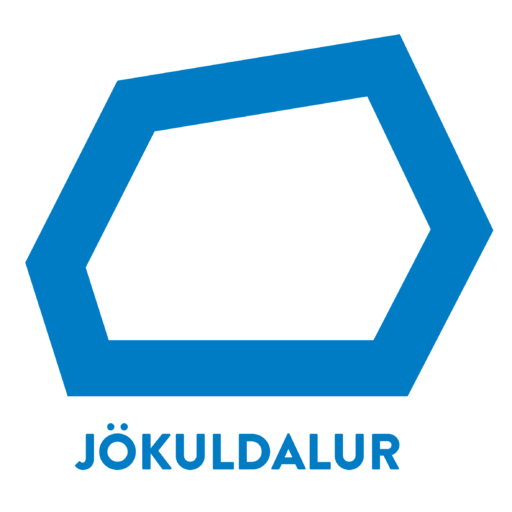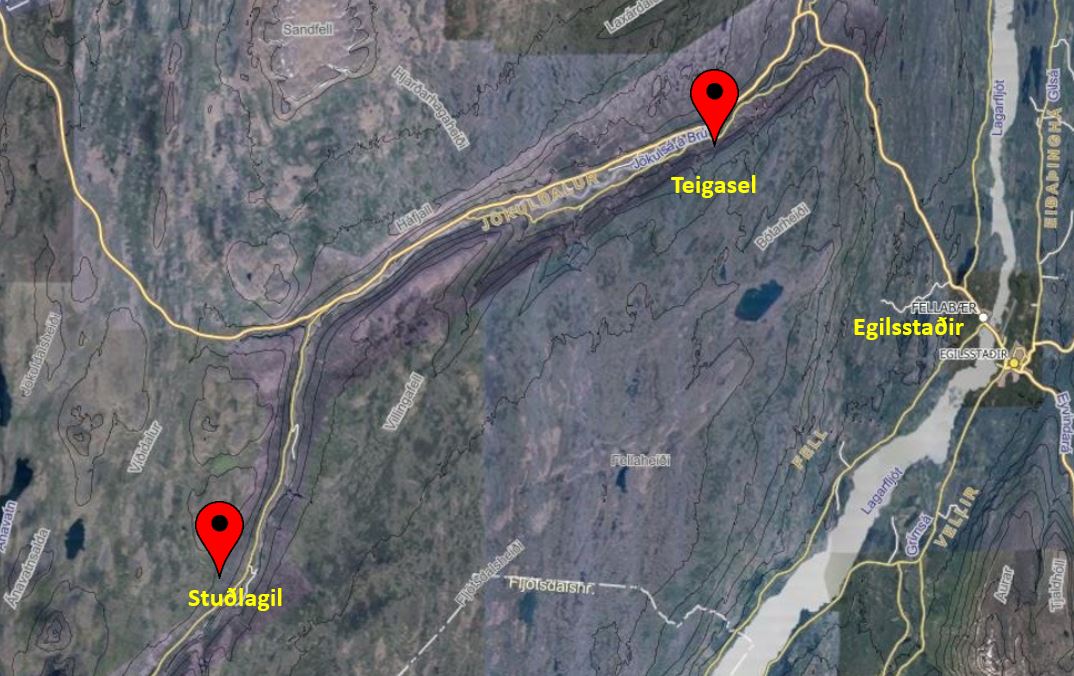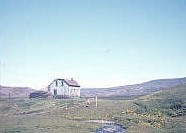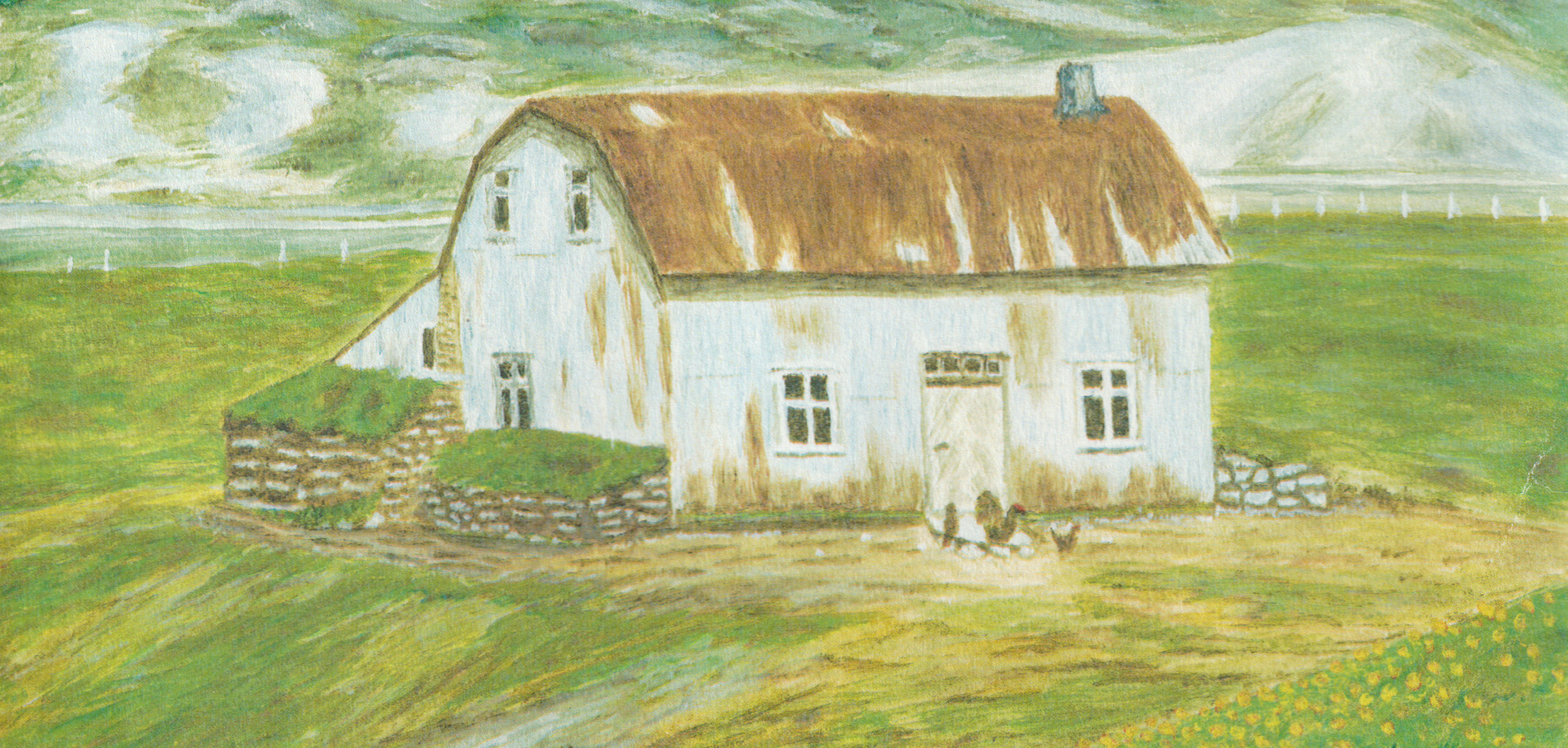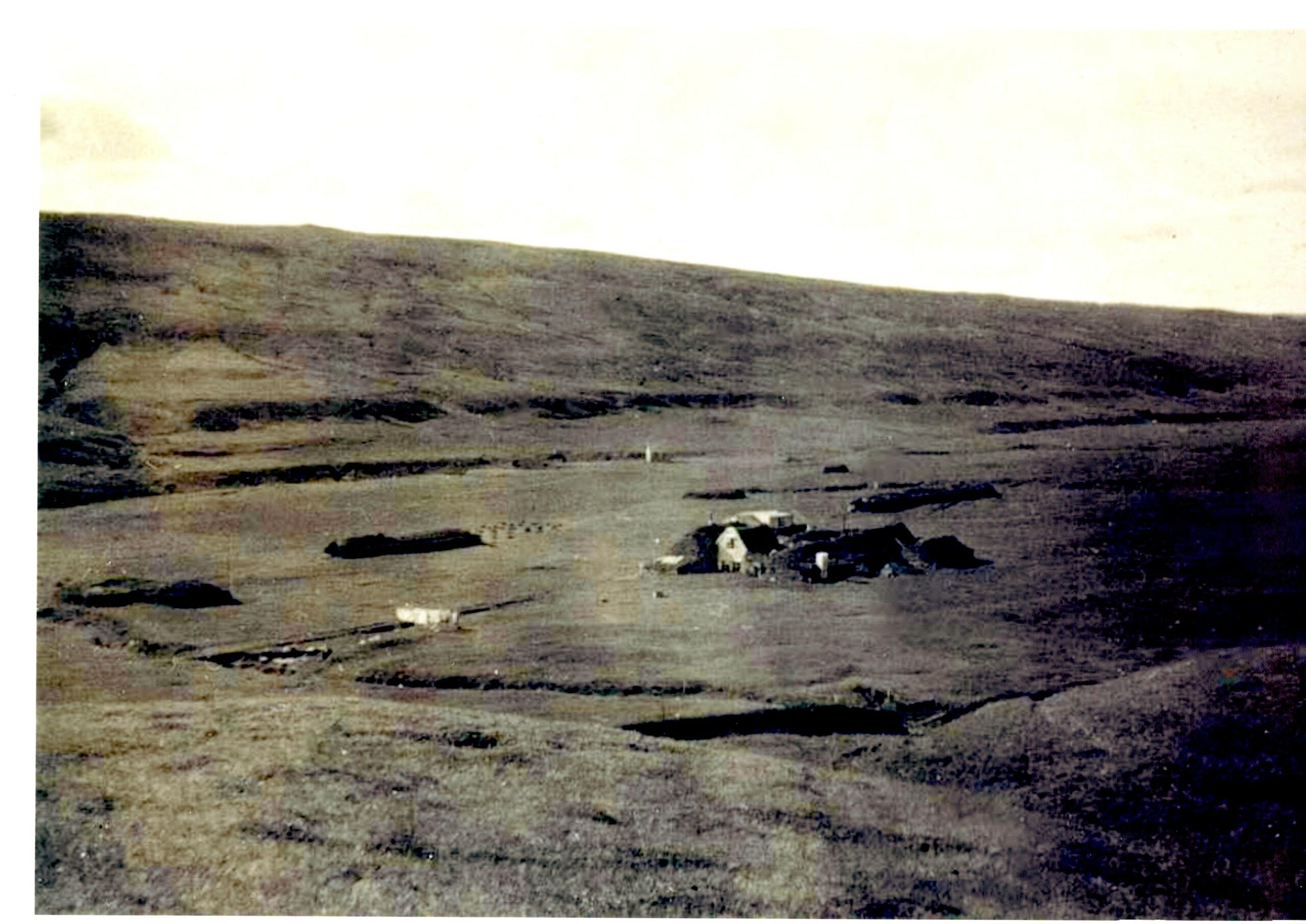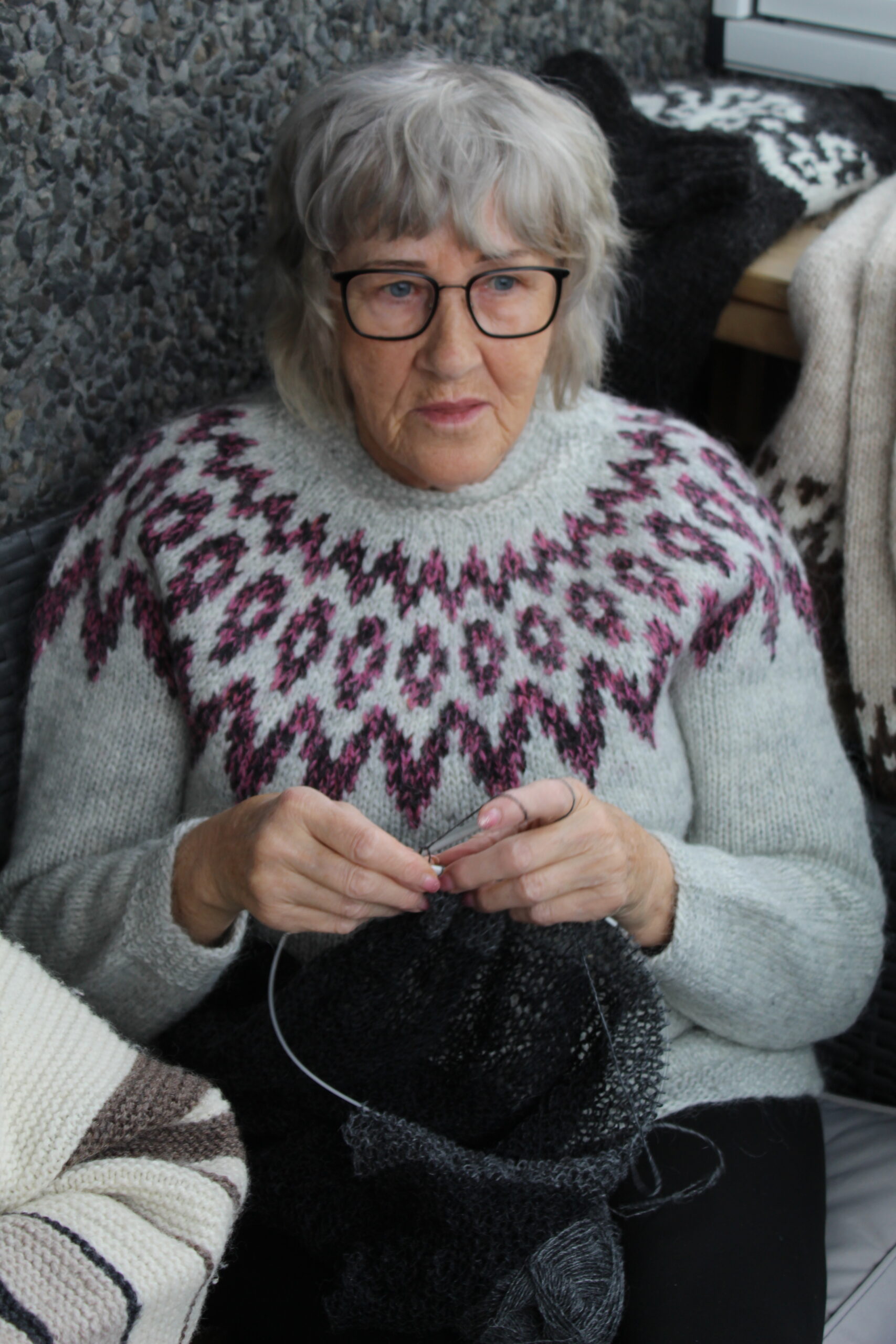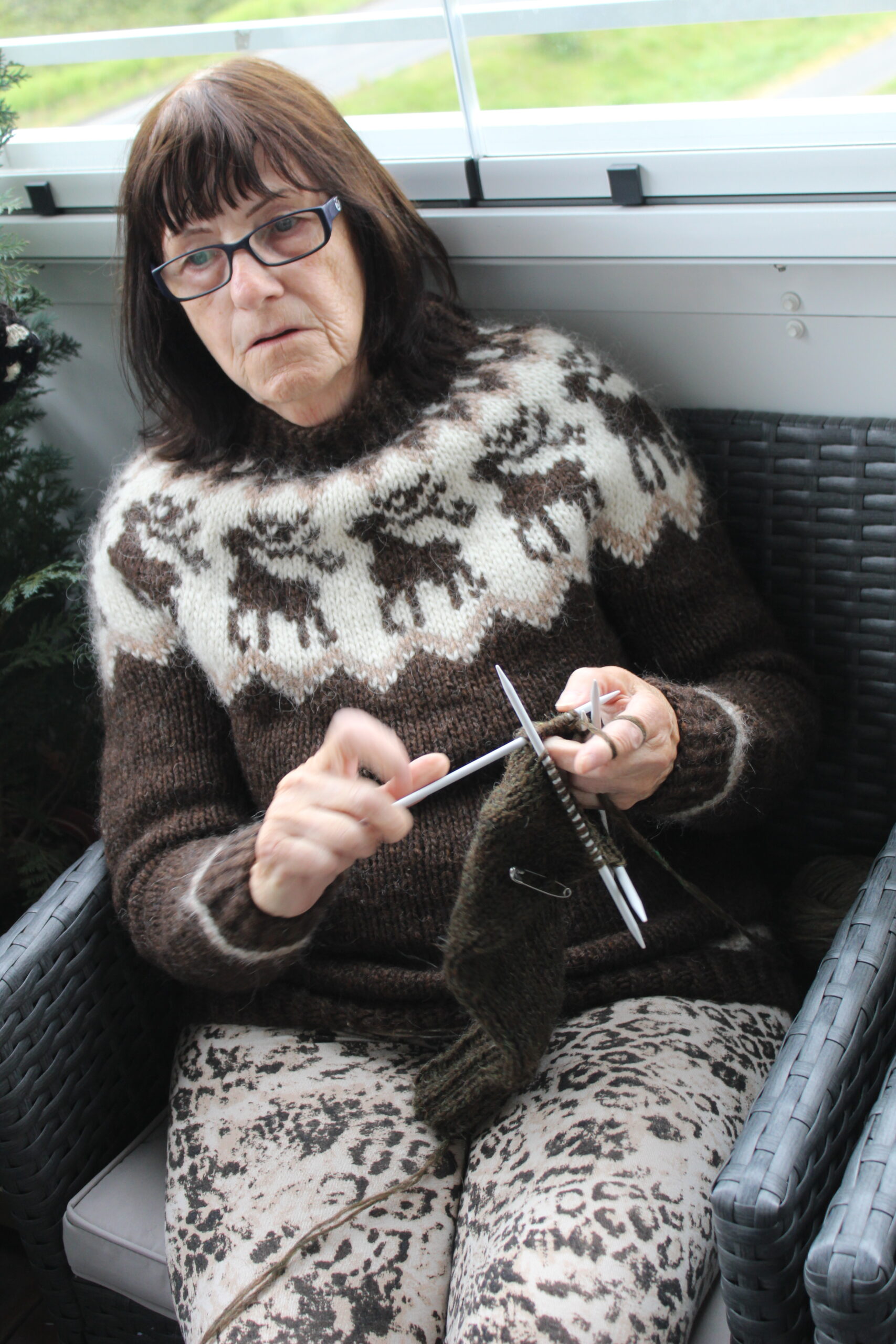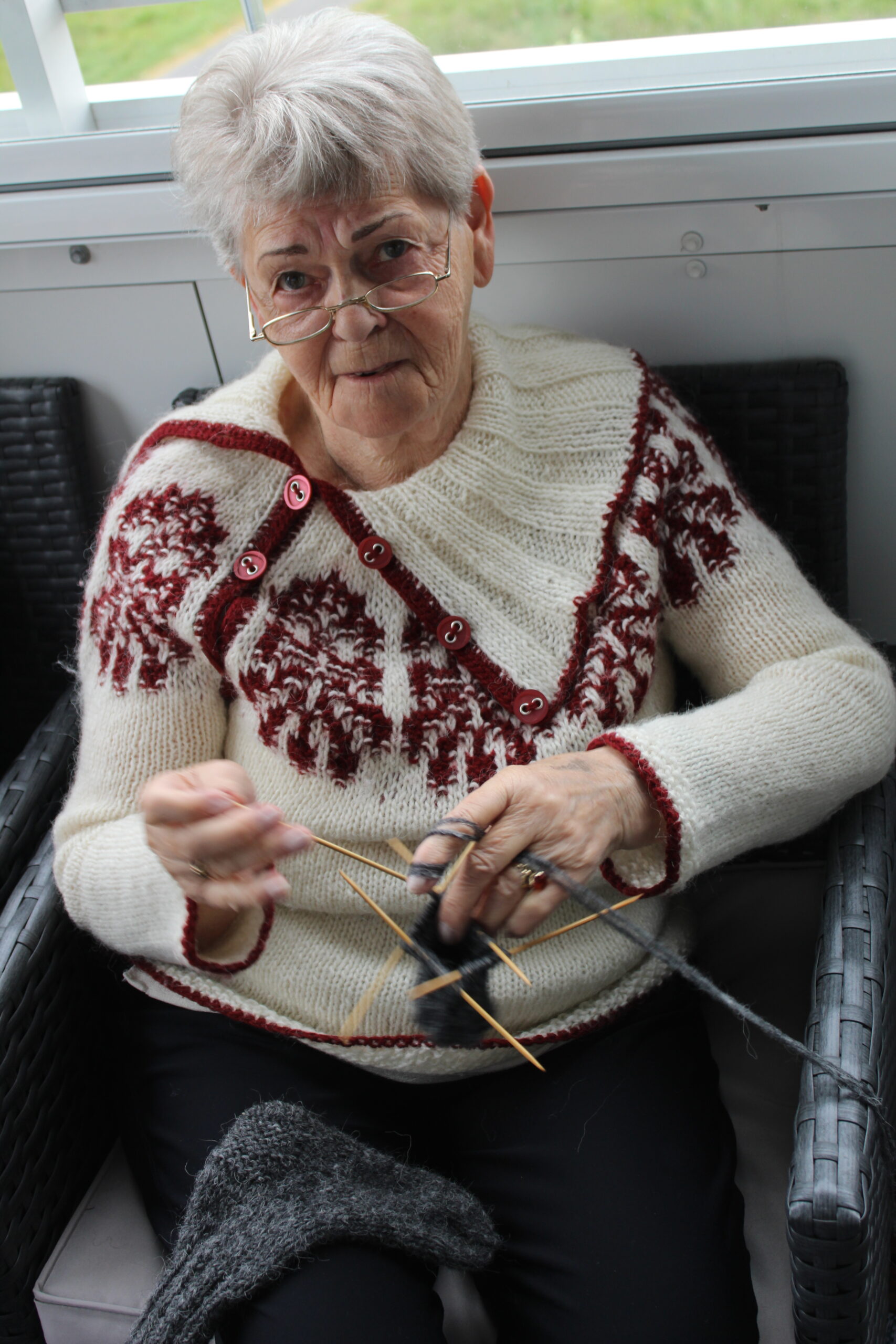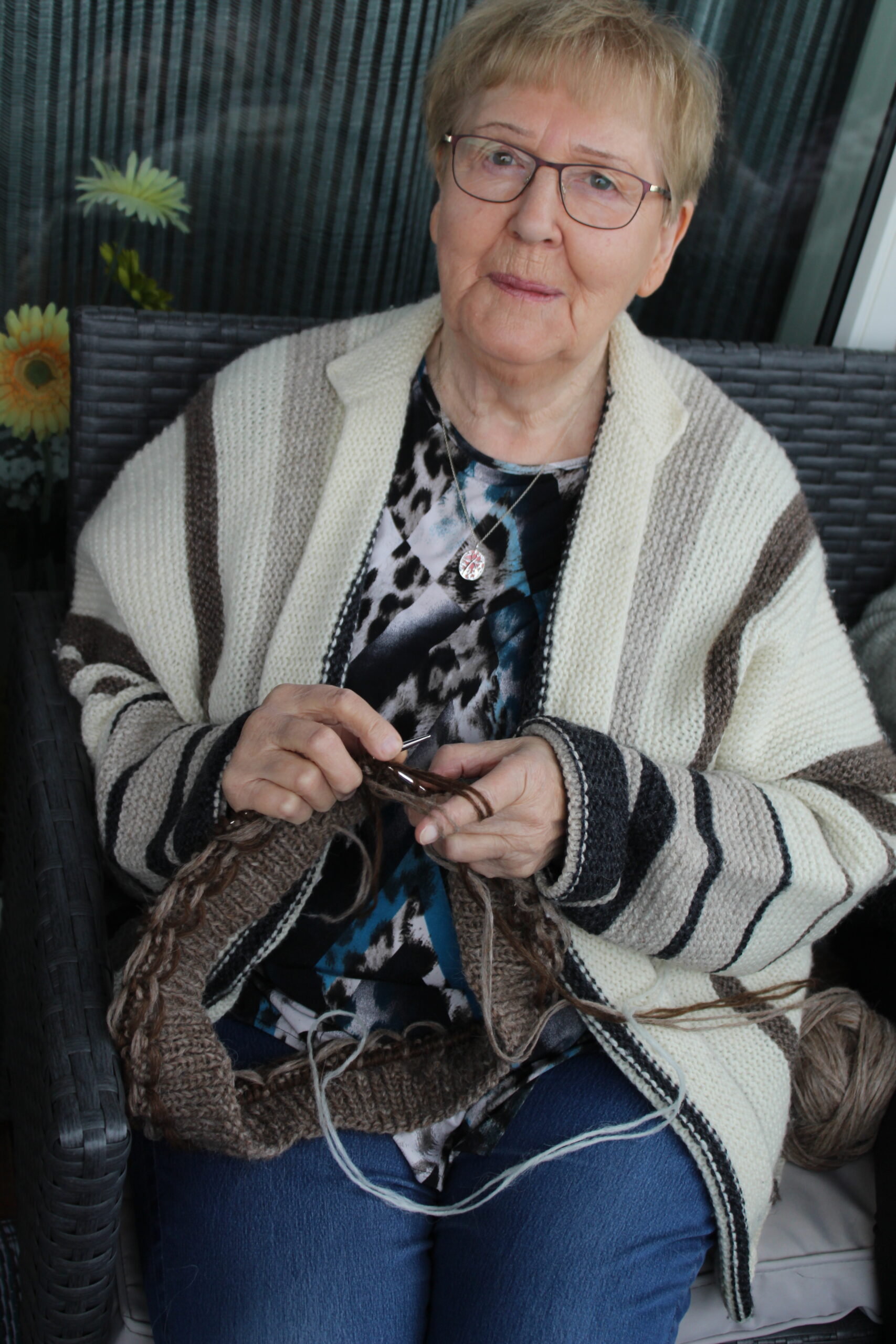The Knitting Sisters from the Valley
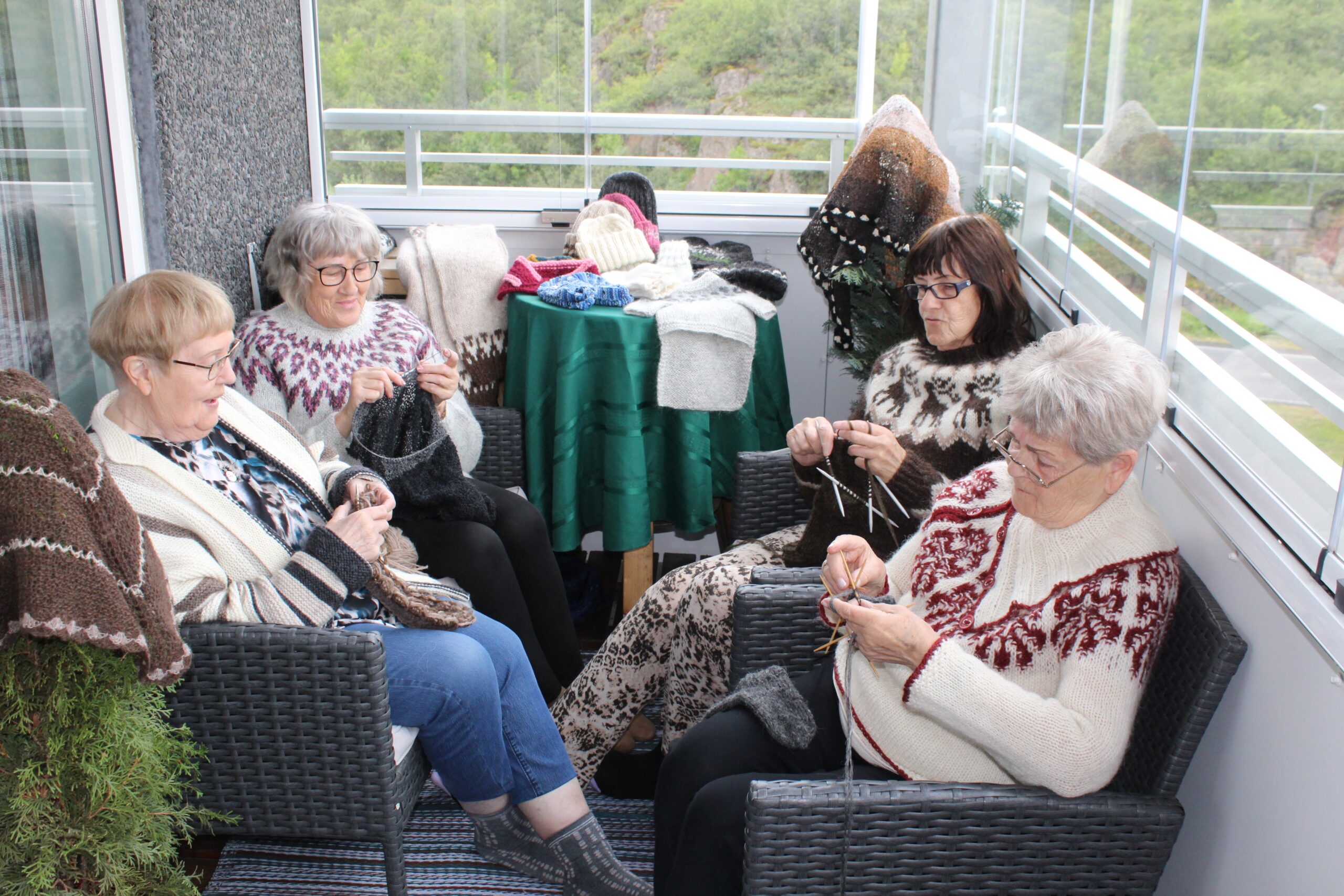
Sisters from the farm Teigasel
The sisters were born and raised on the farm Teigasel which is located at the other end of the Valley on the east side of the Jökulsá river. Their parents, Sigurdur and Margrét had 9 children, four boys and 5 girls, born between 1935 – 1952. The five girls have lived on various farms in the Valley and some of their descendants are farmers and live in the Valley today. On of the sisters, Kolla, lived at this farm Grund. Today, the sisters are senior citizens and their main activity during the winter is knitting all kinds of wool products with the hand made methods that have followed Icelanders for centuries.
History of the Lopapeysa
For Icelanders, knitting wool products has been the traditional way to produce warm and light wool sweater, socks, mittens and in the older days, also shoes with skin and wool. In fact, it has been an important part of Icelandic lifestyle and economy for more than 500 years. Nowadyas, knitting wool products are mainly done by the grandmothers. The practice is believed to have migrated from England, the Netherlands, and Germany at around the turn of the 16th century.
From where is the wool – The origin of the wool?
All wool products are hand knitted from sustainable and warm wool form the sheep’s of the Valley. Icelandic sheep wool is unique as it contains two different types of hair: The outer layer is composed of coarse, long hair known in Icelandic as tog, a tough and water-resistant layer. Underneath, there is a layer of short hair, called þel. It is finer and softer. The two different layers can be separated and used i.e. for different types of yarn.
The wool sweater pattern is unique and give the Icelandic wool sweater (Lopapeysa) a special characteristics. The wool products kept Icelanders warm for centuries and although not a widely used before is still used by many Icelanders for the same purpose as before.
